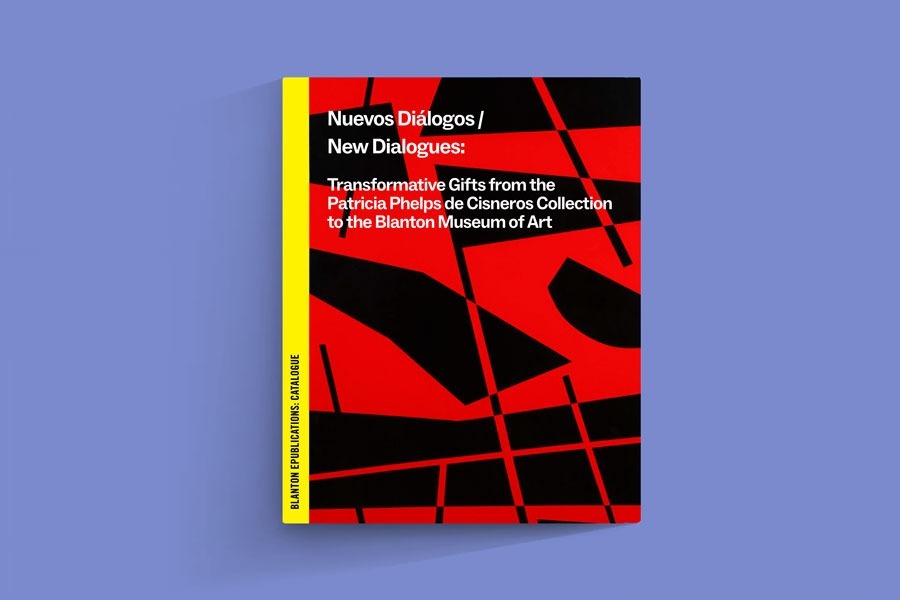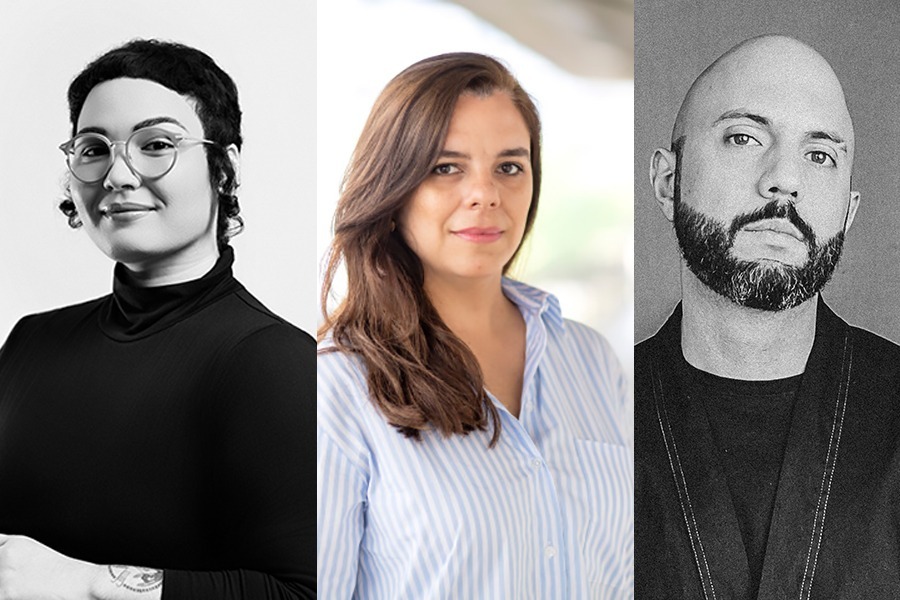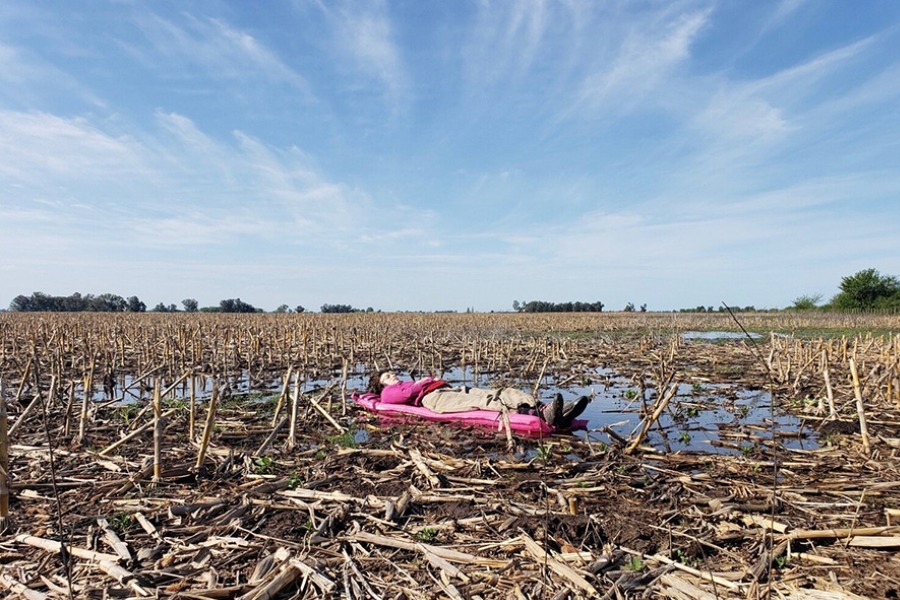Blog

Excerpt: Gyula Kosice in Conversation with Gabriel Pérez-Barreiro
This excerpt is from the book Gyula Kosice in Conversation with Gabriel Pérez-Barreiro, published by Fundación Cisneros/Colección Patricia Phelps de Cisneros in 2012. The book is available to read and download for free.
Gyula Kosice was born in 1924, in the town of Kosice in today's Slovakia. When he was four years old, he immigrated to Argentina, where he lived and worked until his death. Sculptor, plastic artist, theoretician, and poet, Gyula Kosice was one of the most remarkable visionary artists of the 20th century. He co-founded the Madí movement in the 1940s, and he created the Hydrospatial City, a radical urban proposal that envisions a utopian environment suspended in space. Kosice is also recognized as one of the leading pioneers of Lumino Kinetic art.
Gyula Kosice was born in 1924, in the town of Kosice in today's Slovakia. When he was four years old, he immigrated to Argentina, where he lived and worked until his death. Sculptor, plastic artist, theoretician, and poet, Gyula Kosice was one of the most remarkable visionary artists of the 20th century. He co-founded the Madí movement in the 1940s, and he created the Hydrospatial City, a radical urban proposal that envisions a utopian environment suspended in space. Kosice is also recognized as one of the leading pioneers of Lumino Kinetic art.

Gyula Kosice (GK): There was a café, the Rubí, that was a gathering place for a whole lot of people, among them those of the Boedo avant-garde.[1] There were all kinds of people there. I would always end up there; I lived nearby on Calle Sarmiento. It was only four blocks to the Rubí. Maldonado lived nearby, too—this was before he married Lidy Prati—along with his brother, the poet Edgar Bayley, who became a close friend of mine—more than Maldonado, who I felt was a little authoritarian. Other people would show up too, like Hidalgo and visual artists of the time. Sometimes people from the Grupo Orión, who were Surrealists,[2] would show up; I would attack them viciously because I found them so uninteresting. By that time I was already toying with the idea of doing a magazine.
GPB: In 1942?
GK: Yes, in 1942. And then [Rhod] Rothfuss appeared.[3]
GPB: How did the two of you meet?
GK: Rothfuss had an uncle here, a jeweler; he would come and stay with this uncle for two weeks and then return to Montevideo for another two weeks. He lived with his mother; his father, a painter, had died very young, not long before we met. Rhod taught painting, which was how he made his living. We met when he was staying with his uncle. I was still a minor at the time, and the only way I could travel to Uruguay to visit him was with the authorization of a judge. I was permitted to go to Uruguay in 1942 or 1943.

GPB: What else did you and Rothfuss talk about?
GK: Well, he was very well informed about a lot of issues and he was a real bibliophile, a guy who bought books. Every week he would go to the street fair in Montevideo and buy a ton of things. He had a decent income, considering the times. His father had also been a great bibliophile; his relationship to books was fundamental to his work because it meant he was familiar with absolutely everything that came from Europe.
GPB: We talked about how Bayley, Maldonado, and Rothfuss came together at the Café Rubí. What is your recollection of how Arden Quin joined the group?
GK: Rothfuss got in touch and told me that Arden Quin had visited him in Montevideo, and Rothfuss wanted me to more or less show Arden Quin how to paint. "He's a poet who wants to be a painter," he said. Rothfuss, who was a teacher, gave him some classes, taught him the basics. He told me that he was going to send Arden Quin to visit me because he was very intelligent; he said that I would like him. This man turned up, older than I was, with a big moustache and everything, and we became friends and started to spend time together regularly—I'm talking about at the Rubí. At the same time my idea for a proposition came to me—just like that, it seemed to be something in the air. "What do you think," I asked him, "about doing something just like the people who are making such a fuss about the avant-garde, about Martín Fierro and Macedonio Fernández and [Jorge Luis] Borges and all the rest?"[4] It was a natural thing. The fact that we didn't know where we were going with it was the seed that later took root as a publication. We started with that concept, debated over the name, and began to gather material. The first material we received was something that Arden Quin got Torres-García to contribute: a poem and a drawing, and another drawing by his son Augusto Torres. We said to Maldonado, "Listen, why don't you write a piece?" because he was a good writer. But he said no.
GPB: Was Tomás Maldonado already part of the group?
GK: Not entirely, he was very oneiric at that time, very automatic, and time proved us right because he scarcely managed to do that cover and a few things inside.
GPB: Why, exactly, did you give Maldonado the cover to do?
GK: Because he was studying how to make prints with Antonio Berni,[5] and he was interested in a way of making an original printing plate by hand: we thought he was going to do something else, because until it was printed we didn't know what it would look like. We said, "All right, he has visual arts training, we'll give it to him." That was the reason we gave him the cover. He never wanted to become part of the editorial board, though we will never know why. He said, "I'm going to do the cover, Lidy [Prati] will do the illustrations, and I will take care of some things on the inside pages." He wasn't on the editorial committee.
GPB: Nevertheless, you were united by a general interest in nonfiguration.
GK: Our idea was to begin with nonfiguration, though it was still a very broad concept. To give an example: I wrote to Murilo Mendes to see if he could get us a piece by Vieira da Silva, not her husband Arpad Szenes, because he was figurative.[6] We had no idea what was going to be sent. We received something that was completely figurative, not abstract at all. In the case of Huidobro I went to the Chilean Embassy to ask for his address, which they gave to me. He sent me the poem "Una mujer baila sus sueños." You see how it was? We didn’t have much money, so everyone did what they could. Maldonado’s parents were pharmacists and they had some money and gave a little. I did too. Hidalgo also contributed something, but it was never enough. We tried to get advertisers but nobody was interested—people didn’t understand what the magazine was about. In the end the guy from the printing press did the work on credit.[7] When, after a great many sacrifices, Arturo finally saw the light of day two years later, we still had to find money to keep working and doing things. By then I was already deeply involved in another plan to create new conditions for subversion. So Arturo was born with no fanfare whatsoever. I said to myself, "This place is a wasteland, nobody is going to give us the time of day."
GPB: What is the story behind the name?
GK: Arturo comes from Arcturus, the name of a very bright first-magnitude star in the Boötes or Boyero constellation, a boreal constellation close to Ursa Major. This title would come to be an icon for Latin American art in general. Behind the name there was a feeling that what was happening was more than just a rupture, there was a sense that what was being created was a new vision of the world: abstraction. Through the French Embassy we had already gotten access to certain art publications, we knew what was happening in France with Réalités Nouvelles, in Italy with Futurism, we knew what was going on with [Theo] van Doesburg’s Concrete art manifestos. We were familiar with almost all the manifestos—by that point we had all but memorized them, we had digested all that material already. What we were aiming for now was something else. In the magazine there is a very important article by Rothfuss, "El marco: un problema de la plástica actual" [The Frame: A Problem in Contemporary Visual Art], and from there we began to structure the frame in our work. In other words, where the painting ended, the frame began, not the other way around. There are artists who start with the frame and introduce a painting—no, no, that was truly an insult to Madí. We came to realize that after [Kazimir] Malevich’s White on White (1918), making traditional painting was just not possible, we had to find a path that broke away from the wall, the little nail and the kind of carpentry that makes regular paintings and frames.
GPB: Another contradiction is that the publication presented itself as a magazine for abstract art, though in reality there were few works of visual art, and of the editors only Rothfuss contributed, with two pieces, one of which was figurative. In the magazine there are no works by you or Arden Quin.
GK: The problem was that even though it took a while to publish the magazine, we had finalized the layout long before. I was working on a number of different projects, including Röyi, and I wasn’t able to contribute anything because Arturo had been finalized a few months earlier. In fact, the first photograph of Röyi appeared in January 1945 in the booklet Invención; but I didn’t make it in time for Arturo.
GPB: When did Arturo come out, exactly?
GK: In late November 1944. It was printed by Domingo Rocco, who did the magazine of the Association of Leather Goods Makers.
GPB: The declarations that appear in the publication are so eloquent: "Invention against automatism" and "joy: the negation of all melancholy."

GK: In those days the tango was very much in vogue. Everyone was singing and whistling tangos and I was so fed up with the lyrics that were so melancholy, so fatalistic—against women, against the friend who turns out to be a traitor, the woman who has an affair with someone else, until the only one left standing is the poor adoring mother—the lyrics were just a miserable load of shit. That’s why I said no. I said no, let’s talk about life. And life is joy.
[1] The Grupo Boedo, or Grupo de Boedo, was an informal and diverse association of avant-garde artists, established in 1922, that was characterized by an interest in social themes. They often met at the offices of the magazine Claridad, located in the Buenos Aires neighborhood of Boedo, from whence the group acquired its name. Some of the visual artists associated with this group were José Arato, Adolfo Bellocq, Guillermo Hebecquer, and Abraham Vigo. Along with and to some degree in opposition to the Grupo Florida, the Grupo Boedo has been considered the first artistic group to oppose the academicism that dominated the local art world at that time.
[2] Of Surrealist orientation, the Grupo Orión (founded 1939) comprised the painters Luis Barragán, Vicente Forte, and Bruno Venier (who were the founders); Alberto Altalef, Juan Fuentes, Antonio Miceli, Orlando Pierri, Leopoldo Presas, and Ideal Sánchez; and the writers Rodolfo Alegre, Juan F. Aschero, and Ernesto B. Rodríguez.
[3] Rhod Rothfuss (Montevideo, 1920–69) continues to be a great historical enigma. Even after his death in 1969, little would come to be known of his life and work. The most complete source is the magazine Arte Madí Universal, to which he contributed somewhat regularly. For more information, see Mario Sagradini, "Rhod Rothfuss (1920–1969): Vida y producción del artista uruguayo cofundador y teórico de Madí," unpublished manuscript (Archives of the Blanton Museum of Art, University of Texas at Austin, 1999).
[4] Martin Fierro was a magazine published from 1924 to 1927 in Buenos Aires that became the center of an avant-garde movement that encompassed figures like the poets Jorge Luis Borges, Macedonio Fernandez, and the visual artist Xul Solar. The magazine proposed a renovation of artistic languages inspired by European movements like Futurism or Ultraism.
[5] Antonio Berni (1905–81) was one of the key figures of 20th-century Argentine art. His long career explored social and political subjects, and he is especially known as an innovative printmaker.
[6] Murilo Mendes (1901–75) was a Brazilian poet who experimented with fragmentation and symbolism in his work. Maria Helena Vieira da Silva (1908–92) was a Portuguese painter known for her semi-abstract mosaic-like paintings; her husband Arpad Szenes (1897–1985) was a Hungarian painter. In the 1940s the couple lived in Rio de Janeiro, escaping persecution in Europe.
[7] See García, El arte abstracto, 25–44, for another version of this sequence of events.
Image: Gyula Kosice and Rhod Rothfuss, Montevideo, c. 1943





